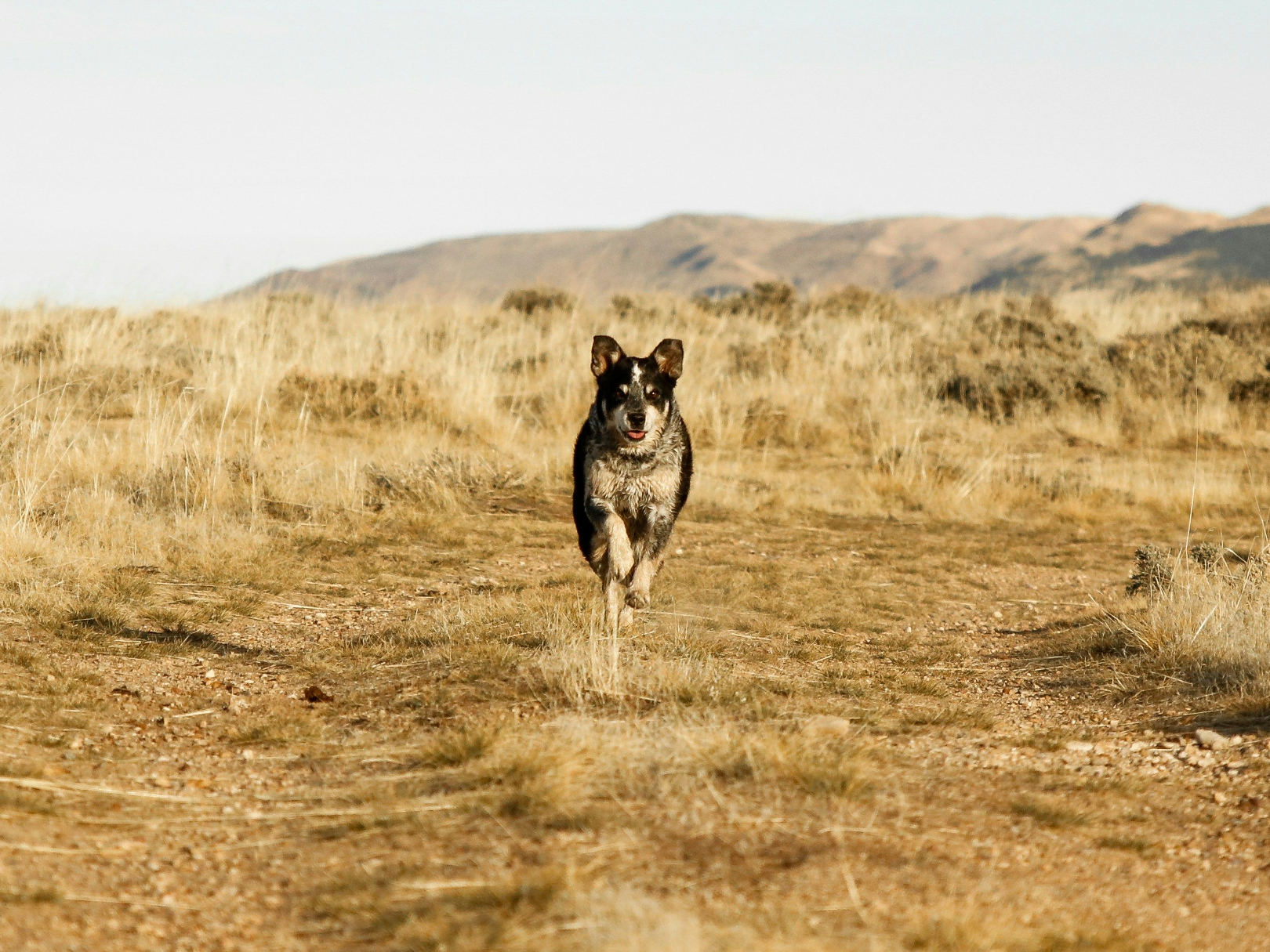Causes and risk factors of Valley Fever in dogs, including how dogs contract the disease and the factors that increase their susceptibility, such as weakened immune systems and certain breeds.
Overview of Valley Fever in Dogs
Valley Fever, officially known as coccidioidomycosis, emerges as a significant health concern for dogs residing in or visiting the arid landscapes of the Southwestern United States, particularly in states like Arizona, California, and New Mexico. This infection is initiated by two closely related fungal species, Coccidioides immitis and Coccidioides posadasii, which have adapted to survive and thrive within the soil of these desert regions. Dogs, with their innate curiosity and penchant for exploring the outdoors through activities such as digging and sniffing around soil, inadvertently disturb these dormant fungal spores, sending them airborne and making inhalation a common pathway for infection. Once inhaled, these spores can germinate and proliferate within the dog’s body, primarily affecting the respiratory system. However, it doesn’t stop there; the infection can spread beyond the lungs, leading to a more severe and systemic form of the disease known as disseminated coccidioidomycosis, which poses a greater threat to the dog’s overall health and well-being.
Despite its potential severity, it’s crucial for pet owners to understand that Valley Fever is not a death sentence for their furry companions. Early detection and appropriate medical intervention can manage the symptoms and halt the disease’s progression. Moreover, dogs diagnosed with Valley Fever do not pose a risk of transmitting the infection to other pets or humans, as the disease is not contagious through direct contact. Instead, it is purely an environmental risk, specific to certain geographical locations where the Coccidioides fungi are endemic. This fact underscores the importance of awareness and preventive measures for dog owners living in or visiting these areas, to safeguard their pets against this invisible threat lurking in the soil. By fostering an understanding of the disease’s transmission pathway and recognizing the early signs of infection, pet owners can play a pivotal role in ensuring the health and longevity of their canine companions.
What is Valley Fever?

The impact of Valley Fever on an affected dog can range from mild respiratory discomfort to severe systemic illness. Initial symptoms often include coughing, fever, and a noticeable decrease in energy, but as the disease progresses, more serious conditions can develop. For example, dogs may suffer from lameness due to joint inflammation, develop noticeable skin lesions, or experience neurological issues, which can be particularly distressing for both the pet and the owner. Given the potential severity of this disease, it’s crucial for dog owners, particularly those living in or near the desert regions where Valley Fever is prevalent, to be vigilant for these symptoms.
How Dogs Contract Valley Fever
Valley Fever is contracted by dogs primarily through the inhalation of microscopic Coccidioides immitis spores, which thrive in the soil of specific arid regions, notably in the Southwestern United States. Activities that agitate the soil, such as digging, playing, or even just walking in areas where these spores are present, can release them into the air where they can be easily inhaled by our canine friends. This is why dogs that spend a lot of time outdoors, particularly in these endemic areas, are at a higher risk of contracting Valley Fever. The risk becomes even more pronounced in certain weather conditions, like after a rainstorm followed by dry weather, which can aid in the dispersal of the spores into the air.
The susceptibility of a dog to Valley Fever can significantly vary. Factors that influence the severity of the infection include the volume of spores inhaled and the dog’s immune system’s capacity to combat the infection. Interestingly, certain dog breeds, such as terriers, have shown a genetic predisposition to be more susceptible to this disease. This genetic factor, combined with environmental exposure, can significantly affect a dog’s likelihood of developing Valley Fever. It’s crucial for dog owners in these areas to be aware of the risks and symptoms associated with Valley Fever to ensure timely and effective treatment.
Risk Factors for Dogs

Moreover, certain dogs are inherently more vulnerable to the disease due to factors that compromise their immune system. Puppies, with their still-developing immune systems, and senior dogs, whose immune defenses have weakened with age, face a particularly high risk of not only contracting Valley Fever but also developing more severe forms of the disease. Similarly, dogs that are already battling other illnesses or are on medications that suppress their immune response are at an elevated risk of severe infection. It’s essential for dog owners to recognize these risk factors and take preventive measures to protect their furry friends.
Symptoms of Valley Fever in Dogs
Valley Fever in dogs manifests through a spectrum of symptoms that can initially be subtle, making vigilance crucial for dog owners, especially in endemic areas. Initially, dogs may exhibit general signs of malaise such as coughing, which can be easily mistaken for a common cold or allergy. As the disease advances, more specific symptoms such as fever, weight loss, and a noticeable reduction in energy and appetite may become apparent. These early signs are vital cues for pet owners to seek veterinary advice, as they can escalate to more severe conditions if not addressed promptly.
As Valley Fever progresses, the range of symptoms can expand significantly, complicating the dog’s condition. In some cases, the disease can disseminate beyond the respiratory system, affecting the dog’s bones, skin, eyes, and even its central nervous system. This dissemination can lead to lameness due to swollen limbs, seizures from neurological involvement, and eye problems that could potentially result in blindness. Skin lesions, although not infectious, are a sign of an advanced stage of the disease, indicating that the fungus has spread from the lungs to other parts of the body. These developments underline the critical need for early detection and intervention. By recognizing the early signs and consulting with a veterinarian promptly, dog owners can significantly impact their pet’s ability to recover from Valley Fever.
Diagnosis and Treatment

Once a diagnosis is confirmed, treatment primarily revolves around administering antifungal medications such as fluconazole, itraconazole, or ketoconazole. These drugs are potent against the fungus but require a lengthy administration period that can span from several months to over a year, depending on how advanced the infection is and how the dog responds to the medication. During this treatment phase, regular follow-ups with the veterinarian are critical. These appointments allow the vet to monitor the dog’s progress and adjust the medication dosage or type if necessary, ensuring the most effective treatment plan is in place.
Prevention Strategies
Preventing Valley Fever in dogs necessitates a proactive approach, particularly for those residing in or visiting areas known for high incidences of this fungal disease, such as Arizona, California, and Texas. One of the most effective strategies is to minimize a dog’s exposure to dusty environments where the Coccidioides immitis spores thrive. This might involve changing the time of day you walk your dog to avoid peak windy periods or choosing locations for exercise that are less likely to be sources of spore-laden dust. Another preventive measure is the use of high-efficiency air filters in your home to reduce the concentration of fungal spores indoors, providing a safer environment for your pet.
In addition to environmental management, educating dog owners about the signs and symptoms of Valley Fever is crucial. Knowledge on what to look out for – ranging from coughing and lethargy to more severe symptoms like joint swelling or skin lesions – enables early detection, which can significantly impact the effectiveness of treatment and improve the chances of a full recovery. Moreover, Off Leash K9 Training of Tucson offers specialized training packages that can help your dog stay disciplined and avoid areas that might be risky, especially when exploring the beautiful but spore-prone landscapes of the Southwest. By integrating obedience and behavior modification training, your dog can learn to avoid digging and disturbing soil, which is a common way they come into contact with the dangerous spores.
Early Detection and Prognosis

Moreover, the prognosis for dogs with Valley Fever varies, largely depending on the stage at which the disease is detected and the overall health of the dog. Dogs that are otherwise healthy and receive an early diagnosis have a high chance of recovery with appropriate antifungal treatment. However, for dogs with disseminated Valley Fever, where the fungus has spread to other parts of the body beyond the lungs, the treatment becomes more complex and extended. Such scenarios underscore the need for comprehensive care, including regular follow-ups and possibly adjustments in treatment protocols. In these situations, the expertise and guidance of veterinary professionals become indispensable in navigating the treatment process and ensuring the best possible outcome for the affected canine.
Conclusion: Promoting Dog Health in Valley Fever-Prone Areas
Living in regions where Valley Fever is prevalent poses unique challenges for dog owners. This fungal disease, while not contagious between animals or from animals to humans, requires a keen eye for early symptoms and a commitment to proactive health management. Recognizing the early signs of Valley Fever, such as coughing, lethargy, and loss of appetite, can be the difference between a quick recovery and a prolonged battle with the disease. Off Leash K9 Training of Tucson understands the critical nature of this illness and is dedicated to aiding dog owners through specialized training programs. These programs do more than just improve obedience; they aim to enhance the overall well-being of dogs by promoting behaviors that minimize exposure to the fungus, such as discouraging excessive digging and exploring in high-risk areas.
Moreover, Off Leash K9 Training of Tucson emphasizes the importance of a strong bond between the dog and its owner, which is crucial for noticing subtle changes in behavior that may indicate health issues. By fostering a deeper connection, owners are more likely to detect early signs of discomfort or illness in their pets, leading to timely veterinary intervention. Their training packages are designed to equip dogs and their owners with the skills needed to navigate the challenges of Valley Fever endemic areas safely.


